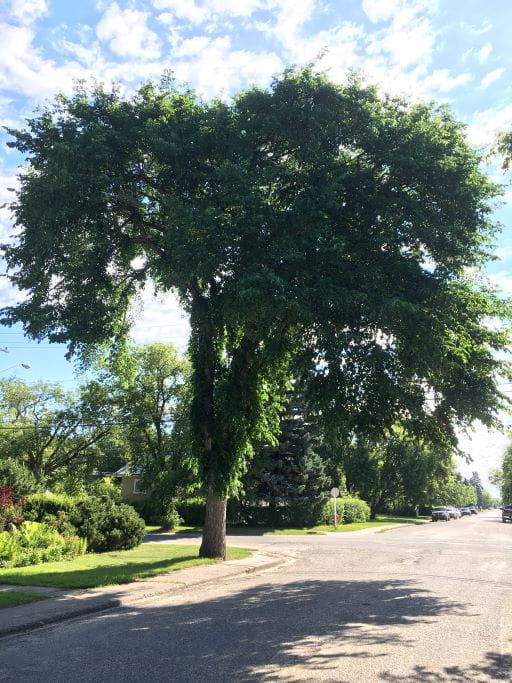Released on March 25, 2019
From April 1 to August 31 every year, it is illegal to prune elm trees in Saskatchewan.
The ban coincides with the time of year when the elm bark beetles that spread Dutch elm disease (DED) are most active. Fresh cuts from pruning can attract the tiny insects, increasing the chance of an infection.
In addition to observing the ban, there are things you can do to help protect your community’s elm trees. Prune your elms before or after the ban period to keep them healthy and better able to resist all types of disease, including DED. Removing dead and dying elm wood means fewer places for beetles to breed, which reduces the risk of an infection. Properly dispose of DED-infected elms promptly throughout the year, including during the ban period.
If you see an elm showing signs of DED – wilting, yellowing leaves on one or several branches near the top of the tree, usually beginning in late June – report it to your local municipality. Infected wood spreads DED.
Therefore, it is illegal to use, transport, store or sell elm firewood.
Regulations also restrict the use, transport, storage and sale of elm logs. Dispose of elm wood promptly and properly; check with your local municipality for designated disposal methods and locations.
If you hire a professional to prune your trees, make sure they are qualified. In Saskatchewan, commercial pruners of elm trees must complete a recognized training program or be under the supervision of someone who has the necessary training. Improper pruning can spread DED and other diseases.
For more information, contact your local municipality or the Ministry of Environment at 1-800-567-4224 or visit www.saskatchewan.ca/forestry.
-30-
For more information, contact:
Val Nicholson
Environment
Prince Albert
Phone: 306-953-2459
Email: val.nicholson@gov.sk.ca
Cell: 306-981-5645

